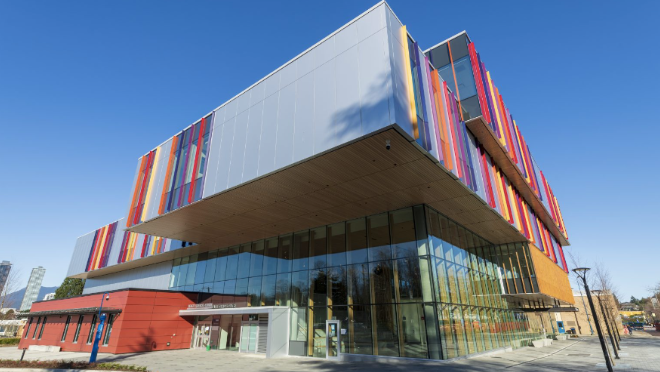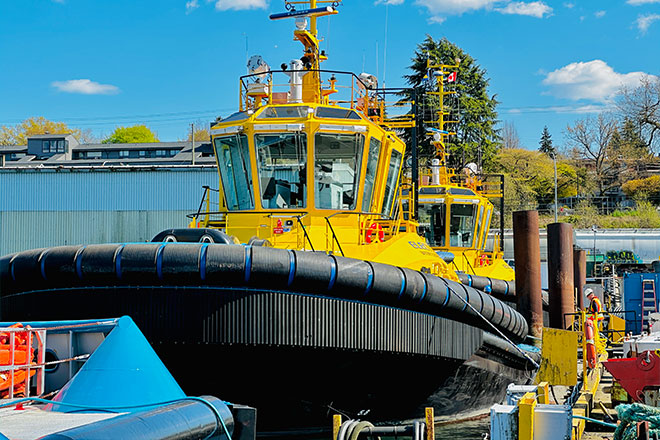From tugs to worker shuttles, Seaspan embraces clean energy
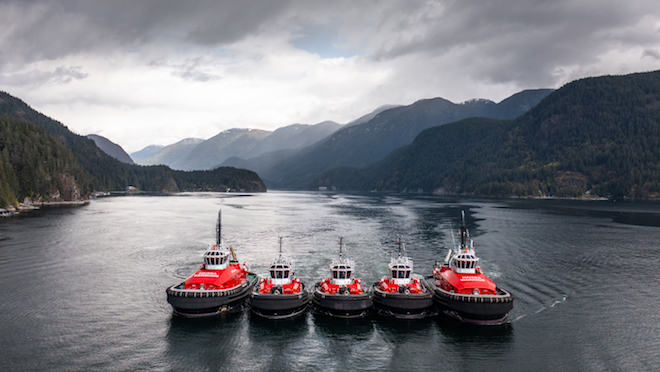
Shipbuilding and marine transportation company joins global fight to slash CO2 emissions in half
Part of a series on BC Hydro Clean Energy Champions: businesses, homes, and institutions – large and small – recognized for reducing their reliance on fossil fuels.
In the name of helping fight climate change, the International Maritime Organization has set a goal of slashing global maritime shipping emissions to net zero by 2050. North Vancouver-based Seaspan ULC is doing its part by embracing emissions reductions in their marine and shipyard operations.
Seaspan is doing it in part by using BC Hydro's clean energy to power tugboats, worker shuttles, shunt trucks, and hybrid ferries. They've also partnered with our industrial energy management program to lean on LED lighting, electric air compressors, and other energy-efficient technologies. Efficiency measures implemented at Seaspan's three shipyards in 2023 have resulted in savings of about 600,000 kWh in electricity savings per year. This is roughly equivalent to the energy consumed by 50 households.
The value of the lighting upgrades isn't just about efficiency. It's also a hit with shipyard and other Seaspan employees who are able to work more safely and effectively in better-lit conditions, especially during the darker winter months.
"Energy efficiency and care for the environment have been among our core values for some time," says Daryl Lawes, senior environmental manager at Seaspan. "With BC Hydro's support, we're developing a strategic energy management plan with an emission reduction roadmap, providing a systematic approach to identifying opportunities and putting business cases together."
Critical to those business cases is consultation and funding help from us and CleanBC. Pushing it along is Seaspan's membership in the Green Marine Environmental Certification Program. A voluntary initiative, Green Marine is about raising the bar on environmental performance beyond regulations in the areas of air, water, and biodiversity protection, leadership, and community relations.
Seaspan was the first major West Coast ship owner, and the first ever shipyard participant, to join Green Marine in North America. They were also the first on the continent to operate an electric tug, and they'll soon have three B.C. designed electric tugs working the waters off Kitimat.
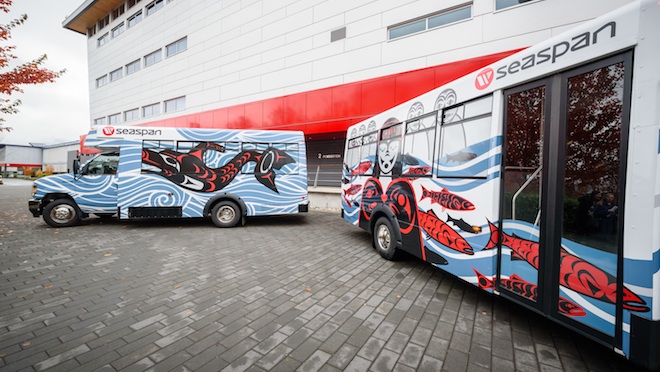
Is there a more beautiful bus in B.C. than Seaspan's electric shuttles?
The beauty of the shuttle buses that take Seaspan workers to and from work on the North Shore of Vancouver is that they look great and are powered by electricity.
The shuttles feature the Indigenous artwork of Olivia George of the Tsleil-Waututh Nation, and Ray Natraoro of the Squamish Nation, have a battery range of up to 160 km, and can be recharged in about 30 minutes via a 150 120 kW DC fast charger.
"Not only are they quiet and environmentally friendly, they look beautiful and are very attention grabbing," says Jessica Gares, who leads external communications for Seaspan. "It was really powerful working with these Indigenous artists, and these buses are very prominent in peak rush hour time throughout their territories. Art being displayed in such a prominent way is very meaningful."
Seaspan recently added a third electric bus to their fleet and estimate the shuttles will save about 1,000 tonnes of carbon emissions over 10 years.
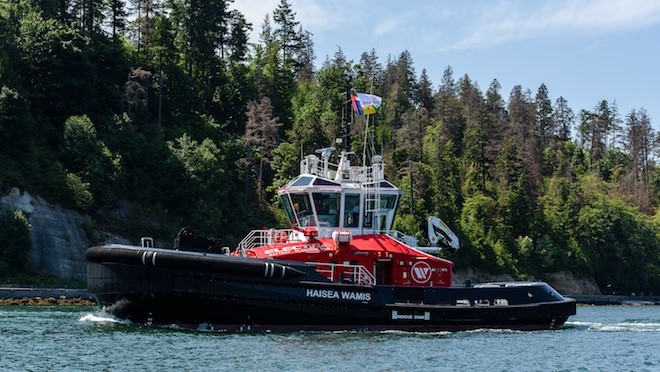
Partnership with Haisla Nation bringing electric tugs to Kitimat
HaiSea Marine, a partnership between Seaspan and the Haisla Nation in northeast B.C, took delivery of the world's first fully-electric tugboat in July 2023. Since then, the tug, called the HaiSea Wamis, has been joined by two other designed-in-B.C. electric tugs to perform regular duties in Vancouver's inner harbour.
But it's all a warmup for the big job. All three tugs, plus a pair of dual-fuel diesel and natural gas escort tugs, will be serving the LNG Canada terminal in Haisla territory in Kitimat.
"Our first electric tug was the first in the world to earn a quiet vessel designation," says Lawes. "It's about 10 times quieter than a conventional tug, which is great for marine mammals, great for whales, and great for those operating the vessels.
Designed by Vancouver naval architect firm Robert Allan, the tugs have enough power to assist LNG carriers on and off their berths at the terminal in Kitimat. Their battery capacity of 5,288 kWh is equivalent to the combined battery power of 70 Tesla Model Y electric cars. Relying on fast chargers, topping up the tug's battery pack takes about four hours.
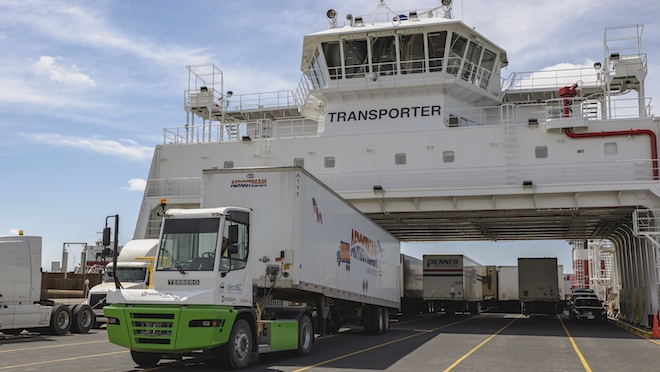
Meanwhile at the commercial ferry terminal, trailers are pulled by electric power
Seaspan uses three electric shunt trucks, has eight more on order, and plans to replace all of its fleet of 20, that are used to tow trailers on and off commercial ferries at Tilbury Terminal in Delta and other locations around the Lower Mainland.
Seaspan is also a pioneer in reducing the amount of diesel it uses to run the ferries, which move goods on trailers between the mainland and Vancouver Island, playing a major role in the supply chain.
"The four new ferries we have are hybrid electric and LNG powered," says Lawes. "We have energy storage systems on board, around two megawatts, which is pretty significant."
Seaspan is also working on developing shore power services at their berths to allow the vessels to fill their on-board batteries and reduce their fossil fuel use. Lawes says the hybrid ferries operate much more efficiently, as the battery system can enable reduced emissions while docking and by topping-up the propulsion system while at sea.
"We've been able to reduce emissions in the last four years by more than 30% per trailer move," says Lawes.
